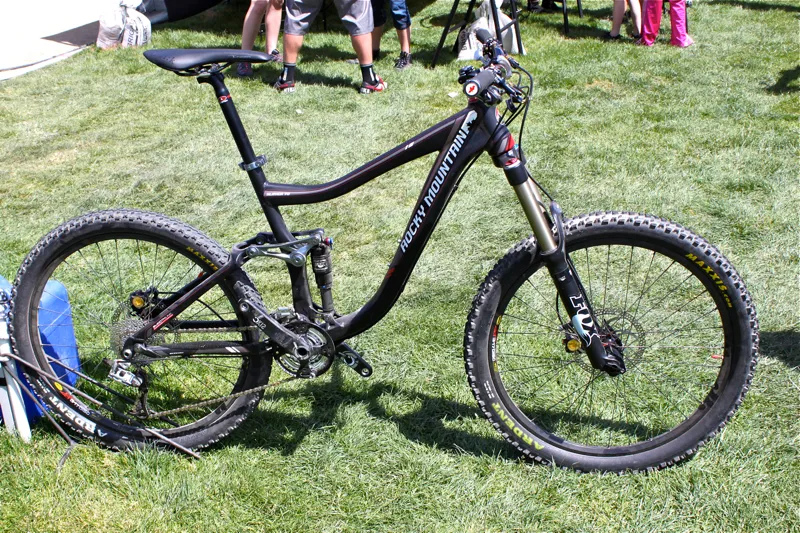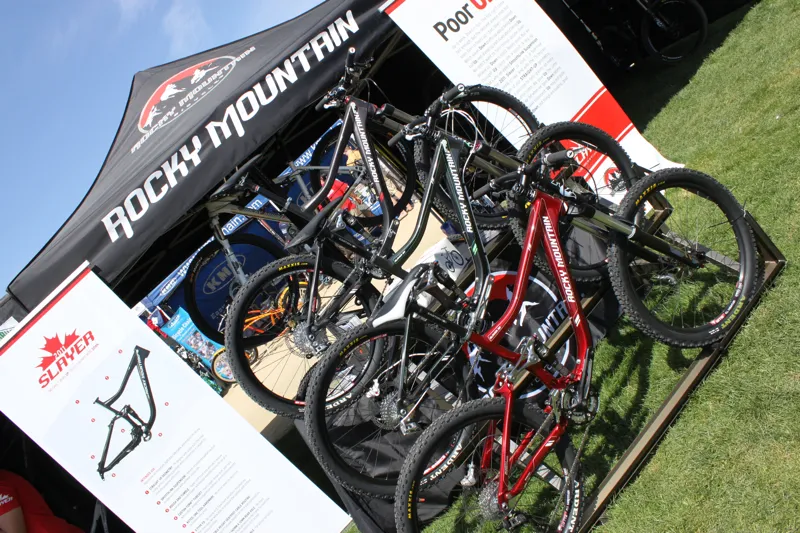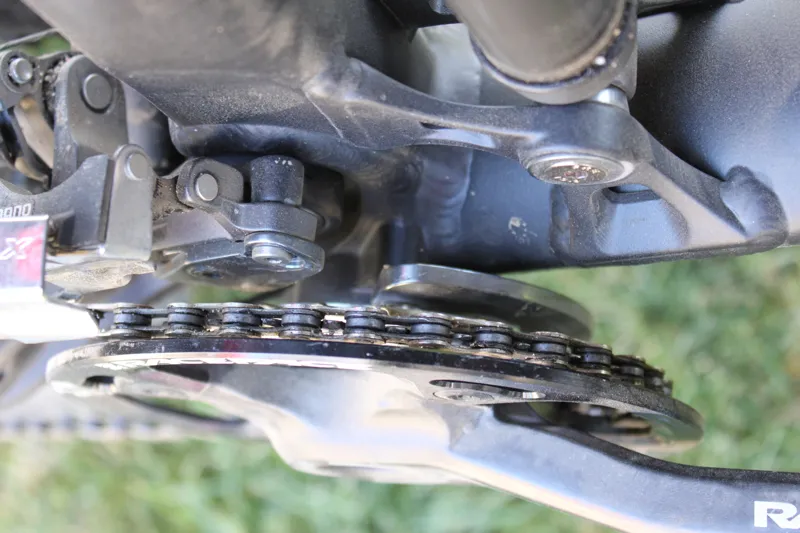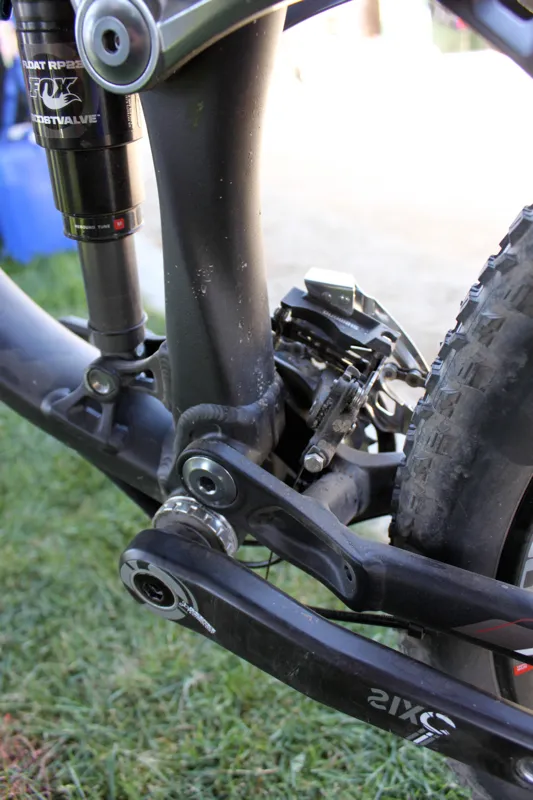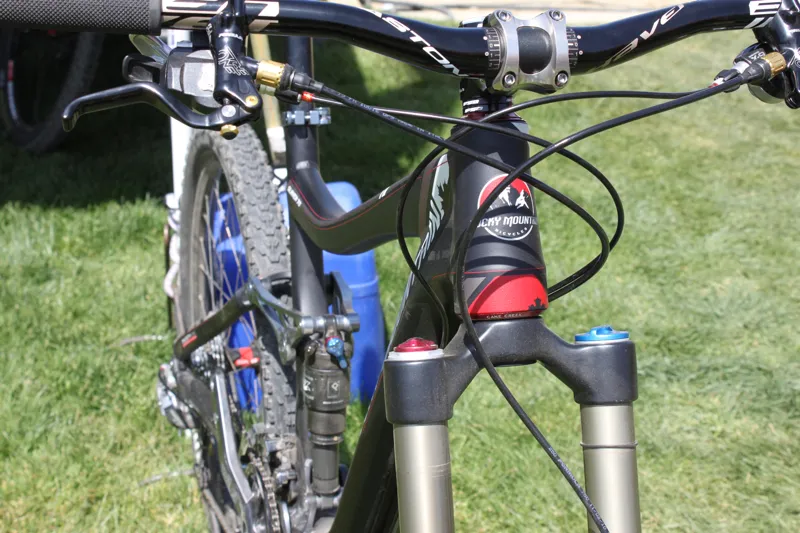Rocky Mountain’s Slayer defined the trail bike category in 2001. A decade later the once revolutionary platform has been redesigned to incorporate today’s technology.
The 2011 Slayer sports a tapered head tube, steeper seat angle, patented Smooth Link suspension, 142x12mm rear quick-release through-axle and hydroformed tubing, which should further the prowess of the 165mm-travel bike for both the ascents and descents.
Smoothing out the rough
Rocky Mountain’s Smooth Link suspension was introduced on the Altitude last year. Similar to Ellsworth’s ICT system, it's a four-bar linkage design with pivots on the chainstay but above the rear axle.
The idea is that the lower link (chainstays) remains parallel to the average chain torque line throughout the bike's travel, eliminating pedal bob and suspension kickback, and ensuring the rear end remains fully active under pedalling. The brake mount is carefully positioned so that it acts like a 'floating calliper' to reduce brake jack and keep the suspension active.
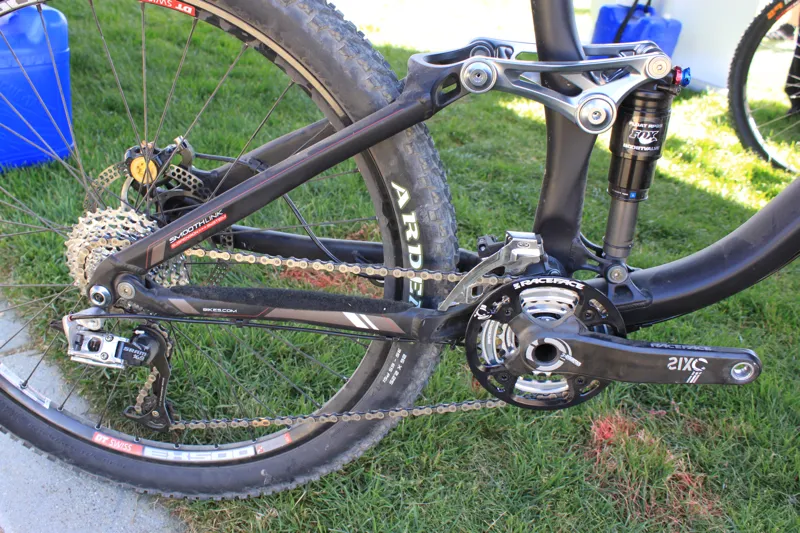
Rocky Mountain's Smooth Link design remains neutral under pedalling and braking forces
The new Slayer's leverage ratio is described as ‘linear rising rate’ – the beginning stroke is linear but there is an increase in progressivity through the mid-stroke to keep the bike riding higher in its travel and provide a snappier ride.
Chain growth is minimised to just over 1cm over the course of the bike’s travel, which helps keep the suspension active under pedalling input. Fans of SRAM’s Hammerschmidt planetary gearing system will be pleased to hear that it's compatible with the Smooth Link system.
Straight up the hill
Rocky Mountain have given the new Slayer a steeper than average static seat tube angle (75 degrees), reasoning that when you're heading uphill with 165mm of rear travel the sag will effectively reduce this to a more normal 73 degrees – they call this StraightUp Geometry. It’s an interesting concept, and a forward pedalling position will surely help for the climbs, but we wonder what affect fork sag and travel adjusters will have.
Chassis tech
The Slayer's triple-butted 7005 FORM-branded aluminium tubing features radical shapes and a tapered head tube. The rear Shimano E-Thru 142x12 through-axle bolster the bike’s lateral stiffness and complements the look of its 15QR front through-axle.

The new Slayer uses Shimano's E-Thru 142x12mm rear through-axle
Rocky Mountain have paid special attention to the seat tube because it’s such an integral part of the suspension system, housing both the main pivot and the rocker arm’s main pivot. The tube is hydroformed to be as wide as possible at the bottom, with a square driveside face for the widest possible bearing placement. A bulge in the centre provides space to mount the rocker.
Where the top and down tubes meet the tapered head tube they are mitred and welded to each other so that there is no overlap. This saves weight and Rocky Mountain say it provides for a stiffer, stronger junction.
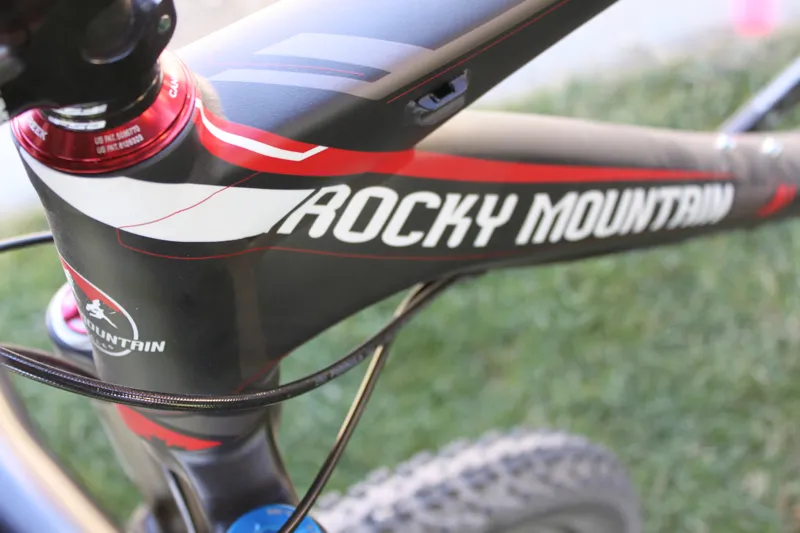
Top and down tubes are mitred and welded so that there is no internal overlap
One-bolt Allen fasteners are used on the pivots, whose countersunk backsides are keyed to capture the rear nut and allow disassembly with one Allen key.

Rocky Mountain's jewel-like one-bolt Allen hardware.
The Slayer features a direct mount E-Type front derailleur, which mounts to the chainstay, should you choose to use to run a double or triple crankset. Otherwise a chain guide can be fixed to the frame’s ISCG mounts. In the case of a derailleur, the ISCG mounts hold a custom drop guard, which Rocky Mountain call the ‘Granny Sandwich’.
Derailleur and brake cables run on the underside of the down tube, while the top tube has cable mounts for a remote adjustable seatpost. The clean looking frame has plenty of front triangle clearance and sports a single set of water bottle cage bosses.
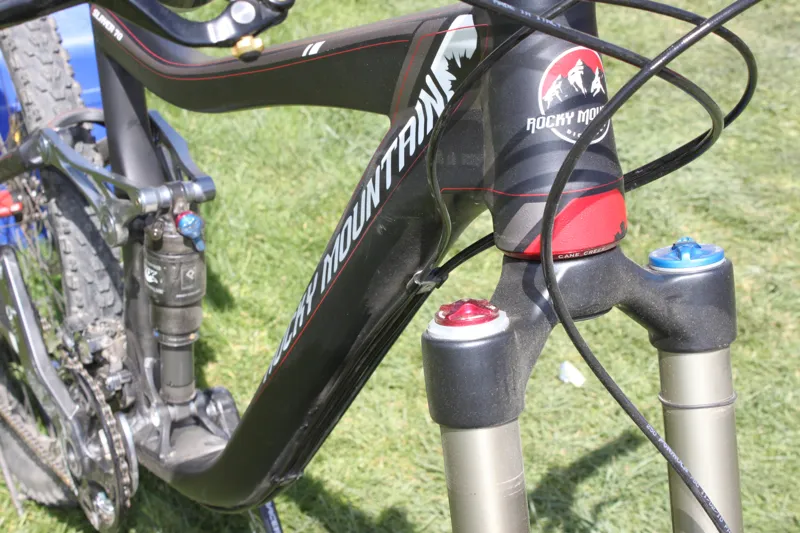
The Slayer features massive front triangle clearance for a bike with this amount of travel
In total the new Slayer is 366g lighter than its predecessor and 12 percent stiffer in full torsion. The frame weight with a custom tuned Fox RP23 XV Boost Valve shock is 3,209g (7.09lbs).
The Slayer will be available in three models – 30, 50 and 70 – all of which will share the same frame. The 30 and 70 will feature painted finishes, while the flagship 70 will be black anodised. Component specifications will match each bike’s price point and purpose. Pricing is targeted at US$2,899, $3,699 and $4,599, respectively. Limited availability is scheduled for August.
